Text
It's time for everyone's favorite guessing game—who's eating whom?
Is it the little jelly Aegina snacking on a much larger siphonophore? Or did the siphonophore snag a delicious deep-sea dinner?
64 notes
·
View notes
Photo



Baleen Whale Fall
(source)
10K notes
·
View notes
Text
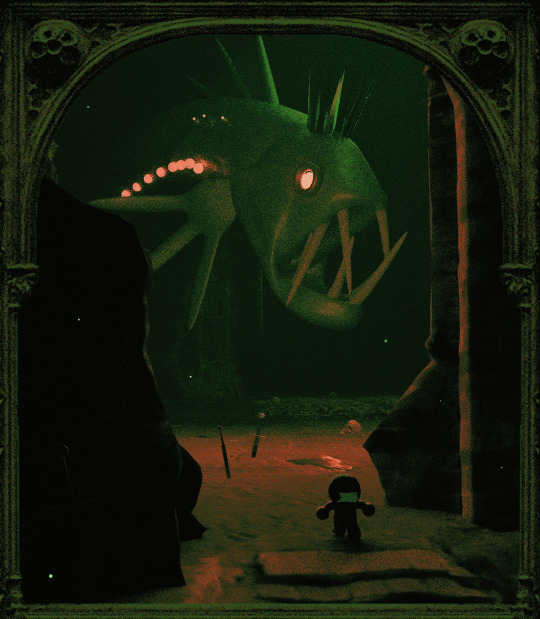
King Viperfish
6K notes
·
View notes
Text
Shining a light on the origins of bioluminescence ✨✨
A new study led by MBARI collaborators at the Smithsonian’s National Museum of Natural History explores the evolution of bioluminescence, nature’s living light show. A team of researchers, including MBARI Senior Scientist Steven Haddock, has learned bioluminescence first evolved in animals at least 540 million years ago in soft corals.
Scientists have long been curious about the evolution of bioluminescence. To tackle the larger question of why bioluminescence evolved, we needed to know when this ability first appeared in animals. In search of the trait’s earliest origins, the team decided to peer back into the evolutionary history of octocorals, an ancient and frequently bioluminescent group of animals that includes soft corals, sea fans, and sea pens.
Mapping out the branches of the evolutionary tree from fossil records, genetics, and bioluminescent behaviors revealed that some 540 million years ago, the common ancestor of all octocorals was very likely bioluminescent. That is 273 million years earlier than the glowing ostracod crustaceans that previously held the title of earliest evolution of bioluminescence in animals.
MBARI’s Biodiversity and Biooptics Team is working to understand how and why animals produce their stunning luminescence.
Learn more about this illuminating research on our website.
#maybe my favorite topic when thinking about the deep ocean!#deep sea posting#deep sea#bioluminescence
142 notes
·
View notes
Text
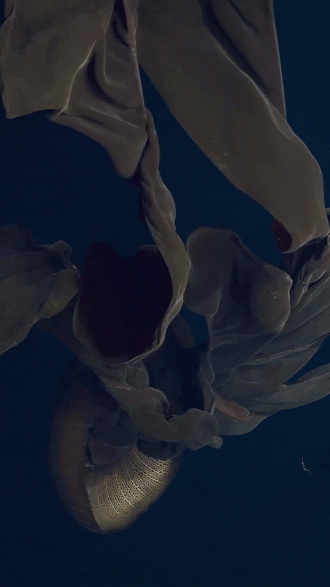
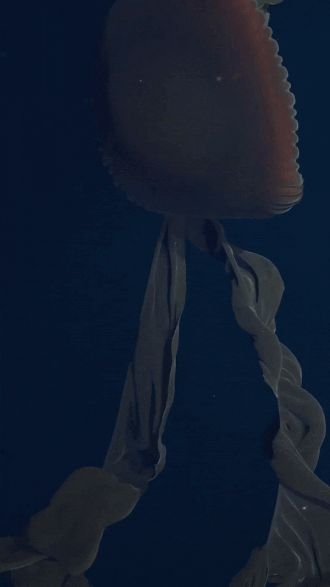

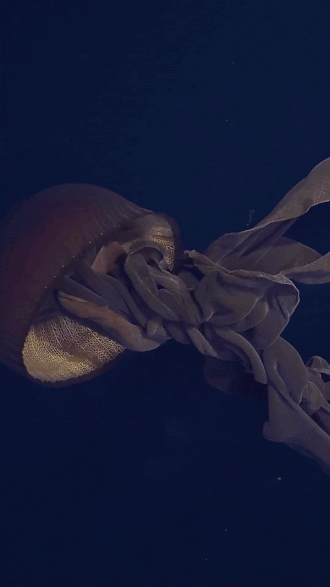


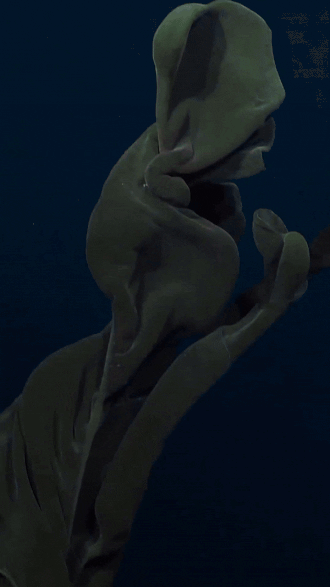


the giant phantom jelly (stygiomedusa gigantea) | schmidtocean on ig
2K notes
·
View notes
Text
DYK..

ghost sharks have long tapering bodies and incredibly large heads. their skin ranges in color from black to pale blue to brownish grey and is quite smooth. they have large eyes, oversized nostrils, and large, visible teeth, which give them a rabbit-like appearance, though within their mouths are three tooth plates.
ghost sharks have mineralized tooth plates. they use these teeth to crush mollusks and worms, making for an interesting diet.
ghost sharks primarily caught as bycatch. while their meat is edible, the majority of their commercial value comes from their livers, which contain an oil known as squalene that's used in a wide variety of cosmetic and pharmaceutical products.
92 notes
·
View notes
Text
youtube
Too often, MBARI’s advanced underwater robots encounter trash.
Even miles beneath the ocean’s surface we find garbage, much of it plastic. Plastic pollution puts deep-sea animals at risk. On the seafloor, bags and other plastic trash can smother marine life. In the midwater, drifting debris can entangle or choke animals or damage their delicate structures.
Over time plastic trash breaks down into smaller and smaller bits and pieces called microplastic. Microplastics have been found throughout the ocean, from the surface to the seafloor. We still don't understand how microplastics are impacting marine communities. MBARI research is revealing our close connection to the ocean—how it sustains us and how human actions affect marine animals and environments.
To protect the amazing animals of the deep, we need to stem the tide of plastic pollution. Single-use plastic items—like water bottles, takeout containers, coffee lids, straws, and shopping bags—make up a large percent of plastic waste. By refusing plastic packaging and choosing reusable alternatives, we can make a significant dent in ocean plastic pollution. Learn more about trash in the deep sea on our website.
Learn what you can do from MBARI’s education and conservation partner, the Monterey Bay Aquarium.
84 notes
·
View notes
Text


benthic zone....
Calcopsis borchgrevinki
Molgula pedunculata
Marseniopsis mollis
Stylocordyla chupachups
Hormanthia
Bathycirnus australis
Protelpidia murrayi
Notodendrodes
17 notes
·
View notes
Text

Blackwater Dive prints available now here! I appreciate any monetary support this month to offset submission fees I paid this week for multiple art opportunities! keep your fingers crossed for me, hopefully you’ll be seeing some art of mine out in the Chicago area again soon :)
take 20% off with code RZXZHAU on my inprnt this month
597 notes
·
View notes
Photo
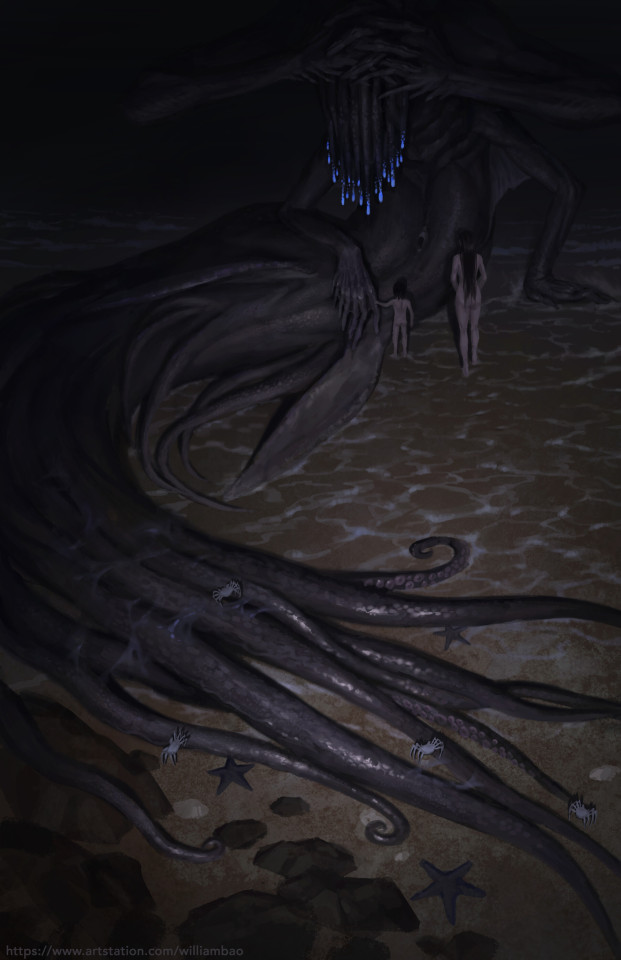






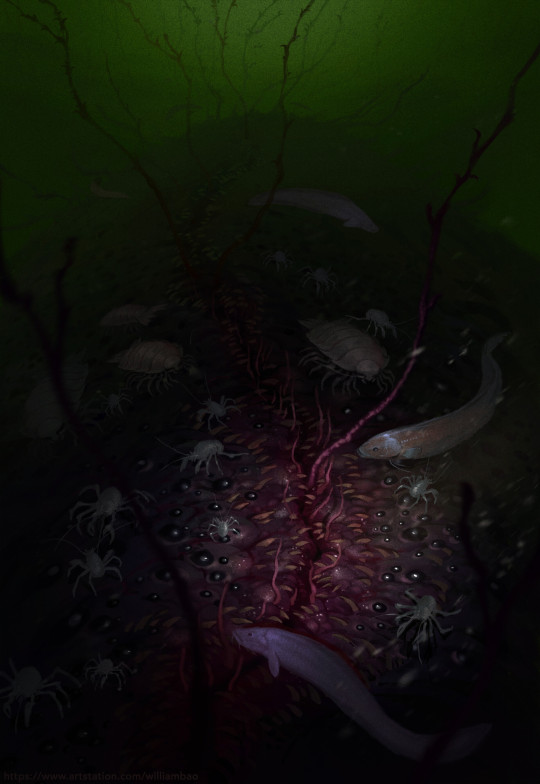
Sea monster illustrations by William 巴特尔 Bao
7K notes
·
View notes
Text

102 notes
·
View notes
Text
Sit back and enjoy 10 relaxing minutes at the Octopus Garden
youtube
Deep below the ocean’s surface, just off the Central California coast, thousands of pearl octopus (Muusoctopus robustus) gather near an extinct underwater volcano. MBARI and a team of collaborators used high-tech tools to monitor the Octopus Garden and learn exactly why this site is so attractive to these animals. After three years of study, researchers confirmed that Muusoctopus gather at the Octopus Garden to mate and nest in cracks and crevices bathed by deep-sea thermal springs.

This site is the largest known aggregation of octopus anywhere in the world, with more than 20,000 octopus nests. The abundance of other marine life that thrives there underscores the need to understand and protect hotspots of life on the deep seafloor from threats like climate change and seabed mining.
178 notes
·
View notes
Text
A deep-sea coral's secret weapon against hungry predators—sweeper tentacles.
A bamboo coral’s stony branches contain thousands of tiny polyps living and working together. The individual polyps stretch feathery tentacles into the currents to grasp plankton and other particles of food drifting in the currents.
When predators like nudibranchs and sea stars try to make a meal of a coral’s polyps, the colony can put up a fight. These fleshy sweeper tentacles are loaded with powerful stinging cells that gently sway along the base of this shaggy bamboo coral (Isidella tentaculum) to keep predators from crawling up to eat those precious polyps.
Learn more about these captivating corals on our website.
140 notes
·
View notes
Text
Snipe eel is the perfect name for that thing
5K notes
·
View notes
Text
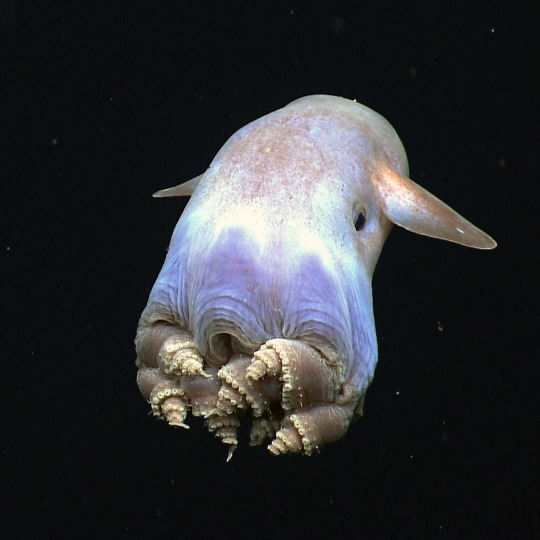
Cephalopod lovers, have you ever heard of the Dumbo octopus? 🐙 Members of the genus Grimpoteuthis, these critters are the deepest-living octopus known to science and can be found near the seafloor at depths of up to 13,000 ft (4,000 m). These adorable cephalopods flap their ear-like fins as they move through the water—a behavior that inspired scientists to name the genus Grimpoteuthis after Disney’s flying elephant. Unlike many other octopuses, Dumbo octopuses do not have ink sacs. Some scientists think it’s because they rarely encounter predators in their extremely remote, deep-sea habitats.
Photo: NOAA Okeanos Explorer, CC0, Wikimedia Commons
896 notes
·
View notes
Text

Every time I see a pic of the tripod fish I just wanna put lil shoes on them
6K notes
·
View notes
Photo

Days 11-15 of Lent fish!
I have a print up of the jellyfish too
5K notes
·
View notes